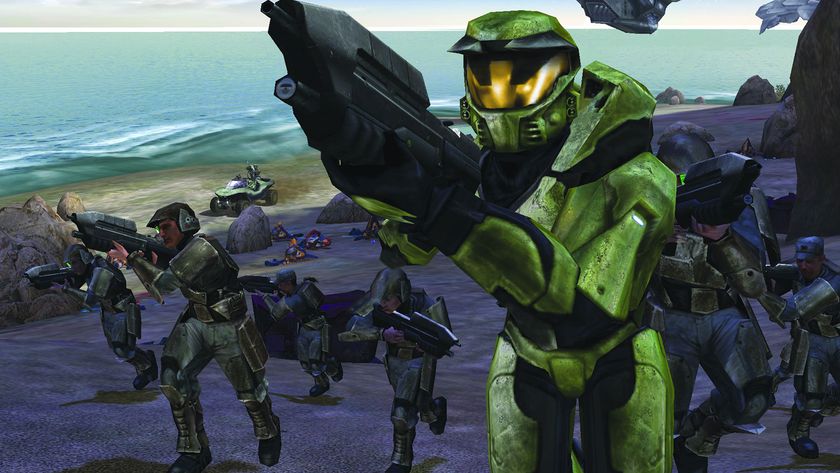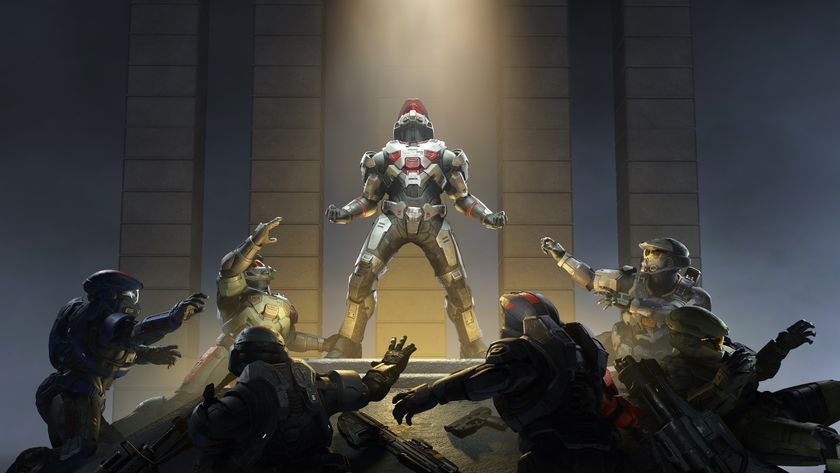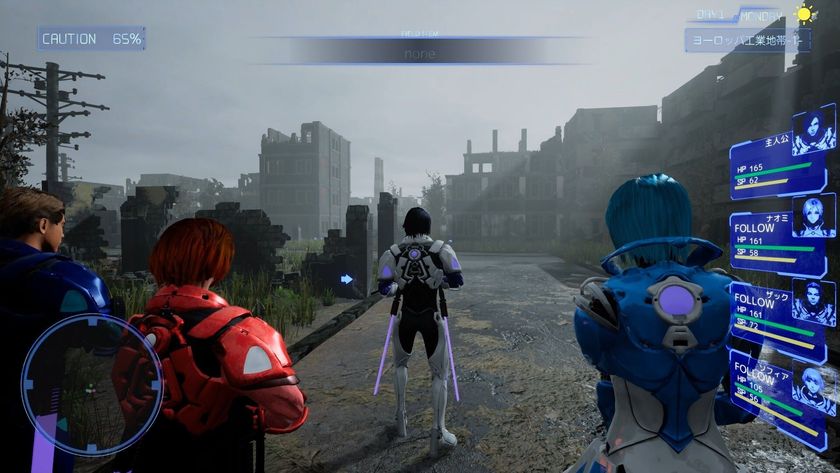Halo has my heart, but the original is impossible to love
After countless deaths, frustrated restarts, and aimless wandering through dark cavernous hallways that seemingly went nowhere at all, my best friend and I looked at each other and agreed: even though we loved playing it and wanted to keep loving it, Halo Combat Evolved is awful. This was the game? This was the one everyone and their uncle were hyping up, the shooter that had fanboys trading in PS2s and Gamecubes for a hulking black Xbox? It started out so well! The first two levels? Brilliant. And everything just felt so damn good. Buttery shooting; that hefty way Master Chief marched forward; the admirable simplicity of its two-weapon arsenal versus remarkably crafty AI in huge firefights.
Despite how wonderful Halo felt, though, our consensus was absolute: this game was no fun and we walked away from it for a decade. We didn’t walk away from the series as a whole, though. As the years went on and Bungie refined its art with Halo 3, ODST, and Reach, Halo became an absolute favorite, especially its co-operative campaigns. The quiet-loud rhythm of ODST’s story in a desolate city, Reach’s desperate confrontations on a doomed colony: here were games that thrilled in all the ways that Halo really didn’t. That fundamental smooth weight of steering Master Chief through his adventures stayed consistent with some slight variations like new characters and rocket packs added in, but they were paired with artful, well-paced stages.That’s why we finally gave Halo: CE another shot when the anniversary edition arrived in 2011. This time we made it to the credits but not happily. We wanted to quit at the Library. Hell, we wanted to quit at The Silent Cartographer. Time and an HD touch up hadn’t dulled the fact that Halo: Combat Evolved is a chore to play and it always was.
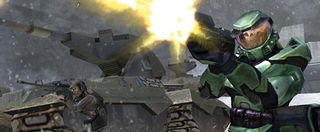
Here’s the problem: while every element of control in Halo is just right, its level design prevents you from fully enjoying it almost from the beginning. and it’s that feel that really cemented Bungie as a studio to reckon with. While first-person shooters had been captivating players for a decade when Halo came out, few of them staged the sort of unpredictable shootouts found here. Halo, the titular second chapter, feels like a mission statement, perfectly encapsulating what the game does best. Fighting the Covenant in huge open fields here was jaw dropping back in 2001 and still a hell of a lot of fun now. I’ve never experienced the central fight in this chapter - where you’re batting enemies back from a crashed ship near a multi-tiered building - the same way twice. It’s a microcosm of what the series has always done best.
The shootouts against the Covenant and the arenas you fight them in have never been Halo’s problem – it’s the spaces in between that cause the problems. In making its world so big and never giving Master Chief a map to follow, Bungie always struggled with making it clear where you were supposed to go next. The UNSC assault rifle, the game’s most iconic weapon, sported a little arrow indicating the cardinal direction you needed to follow in order to reach the game’s next objective, but it lacked specificity. Sure the arrow made it clear what general direction you were supposed to be heading, but time and again Master Chief would get to the edge of some canyon and it would be easy to miss the path entrance above him leading to the next gaggle of squealing Grunts to shoot before the level would progress.
The Library has long been singled out as the worst offender of Bungie’s lackluster, obfuscating level design, but it’s hardly alone. The Silent Cartographer, the game’s first major level built around the Warthog vehicle, is just as bad. The long stretches of beach drag on as you search for the map room that leads to the next stage, and if you’ve cleared out all the enemies but still don’t know where to go, you can find yourself alone driving in circles and hunting for the next step. This isn’t even a problem unique to the original Halo. Wandering around wondering where the hell you’re supposed to go is part in parcel with the experience in fighting through Outskirts, Halo 2’s early mission in Kenya, and even in Halo 3’s stage big closing escape scene. It wasn’t until ODST and Reach that Bungie started to work out its spatial issues so handily embodied in the original’s Library.
But the maze of identical hallways weren’t the Library’s only problem. That’s where the Flood made their first appearance. Rather than the tactically minded Covenant, the Flood are Halo’s berserker enemies that come in two primary varieties, big zombies that rush you and tiny, squid-like spawn that come in waves. The first time I ran into the Flood, I think I got precisely the effect that Bungie was aiming for. Fear and overwhelming panic; the Flood look freaky, move fast, and can quickly drown you. Whether you played it back in 2001 or for the first time today, the shift is pretty keen. After hours of fights with the Covenant, it’s exhilarating to have to change tactics.
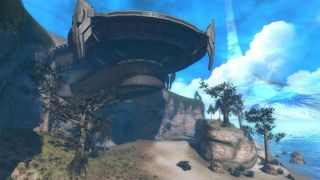
The same blindness to good pacing that infects Halo’s stage design is born out in the Flood, though. Two or three faceoffs with an oozing mass of jellyfish and plant-man zombies builds a slick rhythm of tension and release. When you keep dying over and over again because you’re on your seventh fight against a mass of Flood and you still can’t find your way out of the Library, which you’re now having to travel through a second time as you backtrack your way outside, there’s no more tension. Rather than doling out small pieces of grand scale conflict in equally grand arenas, Halo doles them out again and again, leaving you desensitized to its charms before it’s even three-quarters of the way done.
Sign up to the 12DOVE Newsletter
Weekly digests, tales from the communities you love, and more
Thing is, Bungie did get past these campaign design issues. While Halo 3 had its rough spots, the campaign was much smarter about creating boundaries at the same time as fostering that intense sense of scale that makes the series special. Halo: ODST’s episodic structure and Halo Reach’s snare drum tight story about characters fighting a losing battle helped even better focus its staging. The fruits of that decade-plus learning process are best borne out in Destiny, which intelligently steers you to specific structures and catacombs over impressively detailed open spaces so you rarely get lost or turned around. Of course, there’s always your Ghost that automatically highlight your next destination. If Halo had a handy little guide like that, I might not have quit in disgust back on the Xbox or been so terribly annoyed when I played the HD remaster. No, wait. Yes I would. The Library and the Flood would still be there.
Most Popular





